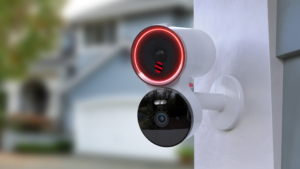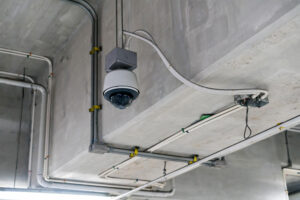What Is Fiber Optic Systems and Why Do You Need It?
Introduction
Fiber optics is a technology that internet services use to transmit information over long distances using light pulses. It uses strands made of the fiber of glass or plastic.
Fiber-optic cables are made up of optical fibers with a diameter similar to a human hair strand. They transmit more data at longer distances than other media and can be bundled into optical fibers.
This technology provides homes and businesses with fiber-optic internet, telephone, and TV services.
This blog will discuss the benefits of fiber optic services.
Fiber-optic cables
Fiber-optic cables contain a variety of optical fibers in a plastic case.
They are also known as optic cables or optical fiber cables. They transmit data signals in light form and travel hundreds of times faster than traditional electrical cables.
Fiber-optic cables do not suffer from electromagnetic interference, which is a form of electromagnetic interference. Lightening can slow down transmission speed. Fiber cables are safer because they don’t carry any current and cannot produce sparks.
Characteristics of fiber optic
These are the main properties of fiber optic communication. This communication uses the light signal to transmit through the optical cable.
Bandwidth
One laser light can disperse many signals per second, resulting in high BW over long distances.
Lesser Diameter
The optical fiber cable diameter is approximately 300 millimeters.
Less weight
Fiber optic cables are lighter than copper types.
Long-distance Signal Transmission
Laser light is transmitted long distances because it doesn’t disintegrate.
Less Attenuation
Fiber optic cables are made of glass, and laser light travels through them. The signal loss while transmitting is just 0.2 dB/km.
Security of Transmission
Data over optical fiber cables can be protected using optical encryption.
IoT: The Impact of Optical Fiber
These are the top reasons IoT greatly impacts Fiber Optics Communication.
- Quick Transmission Media
- Data Security
- Interference does not cause data loss
Why Do You Need a Fiber Optic System?
● Fiber Supports Very High Bandwidth Levels
In terms of bandwidth, currently, no technology is more efficient than fiber – particularly one-mode fiber. Fiber optic cables have greater bandwidth and can carry more data than copper cables with a similar diameter.
Whatever the latest fiber-optic technology comes to the market, whether it’s transceivers or other electronics, The advantages of fiber optics are that the cables themselves don’t hamper its performance.
It’s rather restricted to the electronics that comprise the system. Replace the components so that your cabling is good to go.
Fiber’s latency also reduces, allowing for speedier upload and download speeds and quicker access to the resources. Because of this, fiber has a low loss. Fiber allows you to transfer data over greater distances without delay or interruptions.
● Fiber is Inherently Secure
Fiber cables do not emit signals. Connecting taps to the fiber cable to capture data transmission is extremely difficult.
Since the signal that travels through fiber cable is stored within the fiber, the strand has to be obtained from the edge of the cable by cutting it.
In most cases, this would shut the entire network offline, and then everyone would be aware of the problem.
● Fiber is Intrinsically Safe
Since electricity doesn’t play a role in the transfer of information (data is transferred using light instead), The benefits of fibers include that it’s safe to use.
● Fiber Withstands Water and Temperature Fluctuations
Cables made of fiber aren’t affected by temperature fluctuations, extreme weather, or moisture. For instance, when it comes, the contact with rainwater, communications continue as normal. If lightning hits a fiber cable, the electricity surge isn’t propagated since the fiber cable does not contain metal components.
It can withstand extreme conditions without affecting its performance, which makes it perfect for harsh environments such as industrial, long-distance, and outdoor applications.
● Fiber is Immune to EMI
The event that you place a lot of electronic cables (which transmit electricity) in a crowded area can cause crosstalk between cables. This can cause performance issues as well as a data-transmission interruption.
The fiber cable, on the other hand, does not create electromagnetic interference (EMI). They don’t suffer from EMI as, well. They can be placed close to industrial equipment and not anxiety.
● Generate Constructive Phase Shifts
An important feature of fiber optics is its ability to generate constructive phase shifts, which help to reinforce the transmission. These phase shifts occur at reflective boundaries in the optical fiber cladding. These changes occur because of environmental changes and the speed of light.
The refractive index of the fiber cladding is different from that of the core. This makes the signal in the cladding bounce off the core and travels farther, which reduces the signal’s attenuation. Also, the size of the core has a great effect on the bandwidth of the fiber.
The Bottom Line
In conclusion, a fiber optic network is ideal for long-distance data networking because it is efficient and reliable. By using a fiber optic system, businesses can save on costs and reduce the risk of reliability issues.
Let your Arizona-based company benefit from fiber optic networks.
AZ CCTV will enhance your current network or create brand-new cables.








